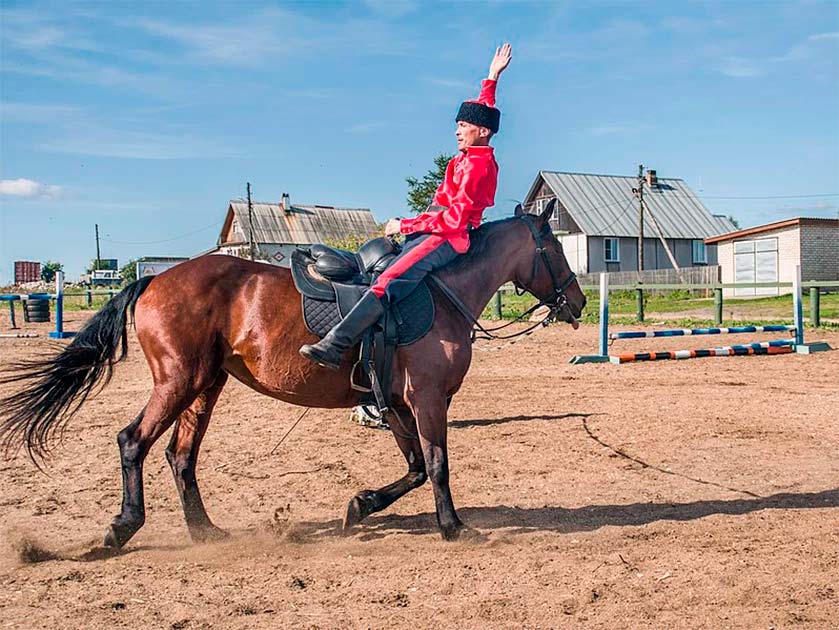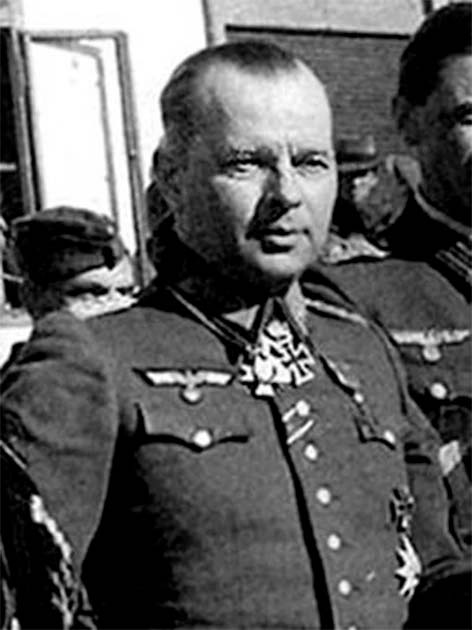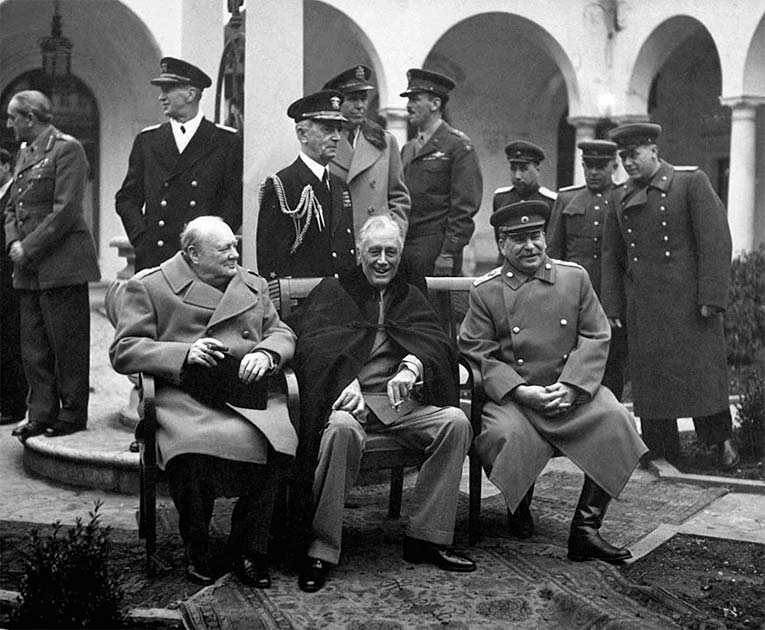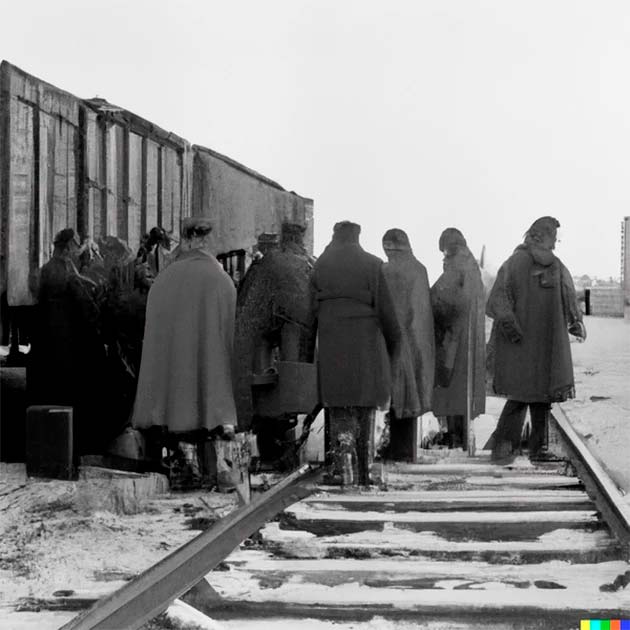“Gulag” is a loaded and evocative term, a byword for the worst brutalities of the Russian regime. The original “Gulag” itself was a former government agency of the Soviet Union responsible for creating and operating the forced labor camps created by Vladimir Lenin. Many people refer to the camps as gulags; millions were sent to isolated work camps in Siberia and other remote Russian towns.
Thanks to historians and authors like Aleksander Solzhenitsyn and his book The Gulag Archipelago 1918-1956, we have learned of the horrendous conditions of the gulag system. During WWII, under the rule of Joseph Stalin, the population of those remanded in gulags grew as large as 14 million people.
Stalin wanted revenge against those who opposed the Soviet Union or those who tried to flee. Perhaps the most notable of these revenge plots came to a head with the repatriation of the Lienz Cossacks in 1945
The Cossacks
The Cossacks were a predominantly Eastern Slavic Orthodox Christian semi-nomadic people from the Pontic-Caspian steppe of Southern Russia and Ukraine. The Cossacks were pro-tsarist and were granted significant self-governing power in return for their fighting alongside the Russian military.
The Cossack people were known for their vibrant uniforms, fuzzy black papakha hats with red tops, for their exceptional ability in the saddle, and their use of their sabers, known as shashkas. The Cossacks lived in the sparsely populated areas of river basins such as the Dnieper, Don, Terek, and Ural rivers. They were and still are considered to be a minority ethnic group.
During the Russian Civil War (1917-1923), Cossack military leaders known as Ataman and those who were members of the Cossack government sided with the “White Russians”. The Whites supported the tsar, and the Bolsheviks, aka the “Reds,” were opposed to the tsar and pushed for a communist revolution.

After the Reds won this internal war, many Cossacks fled their homelands for Western and Central Europe for several reasons. Many of those who fled did not want to be a part of the emerging Soviet Union, fear of reprisal from the Bolsheviks, and seek to escape the new de-Cossakization policies the new Soviet government put into place.
Any Cossacks who remained in their homelands suffered greatly for over ten years. The government took large portions of their land; the Russian Orthodox Church was repressed, and the Cossacks were deported to other areas, including northern Siberia.
There was a “assimilate or die” mentality towards the Cossacks, and forced assimilation was common. Many Cossack groups were almost decimated by the forced famine of 1932-1933, where the total number of deaths from starvation is estimated to be between 5.7 and 8.7 million Russians and Ukrainians.
World War II
Due to their anti-communist sentiments, the Cossack people saw Adolf Hitler’s invasion of the Soviet Union on June 22, 1941, as a wonderful thing. Several high-ranking Ataman publicly praised the Germans’ new military campaign.
- Nazino: Stalin’s Cannibal Island of Despair
- The Tavora Executions: An Entire Noble Family Put to the Sword
Large numbers of Cossacks emigrated to Germany in support of Hitler. Hitler and his Nazi officials didn’t give the Cossacks any political or military roles in the attacks against the Soviet Union. Many Nazi officials, including Heinrich Himmler, hated the non-aryan Cossacks.
However, once the Reich Ministry for the Occupied Eastern Territories (Osministerium) began hiring Cossacks for administrative and propaganda purposes, the Nazis slowly began to warm up to the Cossacks. Cossack fighting units became a part of the German Army, and most of these units were combined to create the First Cossack Cavalry Division led by General Helmuth von Pannwitz.

Pannwitz was well-liked by the Cossacks, and they elected him their leader several times during the course of WWII. He was even given a brightly colored uniform, papakha hat, and saber.
By February 1945, when the world realized that the Germans had largely been defeated, Pannwitz and his Cossacks wished to surrender to the British Army stationed in liberated Austria in Lienz.
The belief was that in Austria, they would be safe from being sent back to the Soviet Union and face the wrath of Joseph Stalin. The Cossacks were unaware that their fates were being decided without them during the Yalta and Tehran Conferences by the “Big Three,” US President Franklin D Roosevelt, British Prime Minister Winston Churchill, and Stalin himself.
The Allies wanted to ensure the timely repatriation of the Allied POWs the Red Army had liberated from Nazi concentration camps. In order to make sure this happened, Roosevelt and Churchill agreed that in exchange for the return of their liberated POWs, they would surrender thousands of German POWs to the Soviet Union in May of 1945 as a “gesture of friendship”.
The Lienz Cossacks
Originally the parties agreed that “Soviet” citizens to be deported did not include those who fled the country during the Bolshevik Revolution before the USSR was established. Those who fled and the pro-white Cossacks were never citizens of the Soviet Union because they left before the Soviet Union was formed.
This didn’t last long, and Stalin demanded that all Cossack POWs be repatriated to the Soviet Union. On June 1, 1945, the UK loaded 32,000 Cossacks and their wives and children into trucks and delivered them to the Soviets. Most of the Cossacks were sent to gulags in Siberia and northern Russia; others escaped or took their own lives before they ever reached the Soviet Union.
In Lienz, the British Army arrived to invite the over 2,479 Cossack women, children, the elderly and the 2,201 soldiers and officers to what the British said was an “Important conference with British officials,” and the Cossacks were promised that they would return to Lienz by 6pm that same evening. Not all the Cossacks felt good about this random meeting, but British officers repeatedly swore to the Cossacks that they were only going to a conference.
By May 28, 1945, the British and Cossacks had developed a friendly relationship, and why should the Cossacks not trust the people who relocated them somewhere safe, fed them, and were seen as friends? Cossack officers were relocated by a heavily armed British convoy and taken to a prior POW camp near Spital. Once the officers were closed in the camp and behind barbed wire, they began to realize something was very wrong and began to panic.
- Republican Marriage: The French Revolution’s Brutal Execution
- Psychology of Tyrants: History and Observations
Insignia was torn off of uniforms, and people began to destroy their personal papers in an attempt to somehow stall the NKVD from whatever horrendous fate they had in store for the officers. The next day, May 29, vehicles arrived to take the officers to be repatriated, but the Cossacks refused to get on the trucks, choosing instead to sit on the ground in defiance.

The British soldiers began beating the Cossacks with their hands and rifle butts, and after a few minutes of the assault, the Cossacks loaded themselves into the trucks. On the way to the town of Judenburg in the Soviet-Austrian Zone of Occupation, officers in the trucks began to kill themselves, and others escaped by jumping out of the trucks and hiding for hours.
Those Cossacks that surrendered were taken to the NKVD’s notorious Lubyanka Prison, where they were then “tried” and sentenced to death and executed by hanging. Pannwitz, loyal to the men he led until the end, refused to leave them and was hanged alongside other high-ranking Cossack officers on January 16, 1947.
On the morning of May 29, 1945, the other Lienz Cossacks were told that their officers had lied to them and everyone in the town would be sent back to Russia. As expected, everyone began to panic; many Cossacks burned or threw away their passports and began hunger strikes.
According to survivors of this incident, many Cossacks were shouting at the British officers that they weren’t Soviet citizens and why would they be sent back to a place they did not come from. At the camp, religious services were held, and the men, women, children, and elderly in Lienz prayed for hours and sobbed, hoping that God would save them.
The Cossacks even killed their prized horses so the British would not take them after the camp was cleared. On June 1, 1945, a large convoy of trucks arrived to repatriate the Lienz Cossacks and were forced into them by armed soldiers who were ordered to shoot to kill if needed.
All around, Cossacks were being beaten, shot, having babies ripped from their mother’s arms, and husbands and wives committing suicide right where they stood. Still, others shot or hung themselves in an attempt to avoid being repatriated.
Once the trucks were loaded, the prisoners were studded into cattle cars with sealed windows so nobody could try to escape the train car. Women, children, and even priests were beaten and forced onto the ground before being handed off to the Soviet Union to face the NKVD.

An estimated 45,000-50,000 Cossacks were “repatriated” in this fashion. The Cossacks who managed to escape repatriation hid in the depths of the forests and mountainsides. Many others hid in plain sight, taking on new identities as Turks, Poles, Armenians, Latvians, and Yugoslavians.
Those captured were sent to gulags and other work camps, where they perished. This repatriation effort is often known as the “Betrayal of the Cossacks” because the Cossacks were so sure that the British and even US soldiers and governments would see them as anti-communist allies and spare their lives.
Top Image: Russian Cossacks in WW2: thousands of such soldiers along with their families would be betrayed and sent to their deaths at Lienz. Source: Bundesarchiv, Bild 146-1975-099-15A / CC-BY-SA 3.0 DE.